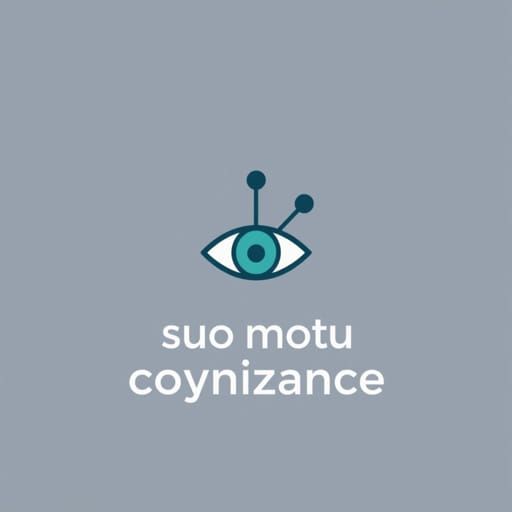What Is Suo Motu Cognizance
In many legal systems around the world, courts are generally expected to act on the basis of petitions filed by parties. However, there are certain instances when courts take action without any party approaching them formally. This proactive power, especially prevalent in public interest cases or human rights issues, is called suo motu cognizance. Understanding this legal concept is crucial to grasping how justice can sometimes transcend procedural limitations to uphold the law and protect public welfare.
Definition of Suo Motu Cognizance
The term ‘suo motu’ is derived from Latin, meaning ‘on its own motion.’ In legal terminology, when a court takes ‘suo motu cognizance,’ it means the court has taken notice of an issue or offense on its own, without any formal request or petition by an affected party. This action allows the judiciary to respond to pressing matters of public interest, especially where justice may be compromised if dependent solely on external complaints.
Judicial Powers and Discretion
Suo motu cognizance is a reflection of a court’s discretionary powers. In jurisdictions where this practice is recognized, such as India and certain common law countries, higher courts like the Supreme Court or High Courts can act suo motu in the following ways:
- Initiating a case based on media reports or public outcry
- Responding to administrative lapses or violations of fundamental rights
- Demanding accountability from government institutions or officials
This doctrine enhances the court’s ability to function as a guardian of constitutional and legal rights, especially for marginalized or voiceless groups who may otherwise lack access to justice.
Purpose and Importance
Suo motu cognizance plays an essential role in legal systems where public accountability and the rule of law are fundamental. The rationale behind this doctrine lies in empowering the judiciary to prevent injustice even when no formal litigation has been initiated.
Protecting Fundamental Rights
In many democratic countries, courts use suo motu powers to safeguard fundamental rights guaranteed by the constitution. For instance, if a report surfaces regarding inhumane prison conditions or police brutality, the judiciary can take notice of the issue and initiate proceedings to investigate and address it.
Filling Institutional Gaps
When executive or legislative branches fail to act, courts may step in using suo motu powers. This intervention is particularly valuable in cases of environmental degradation, custodial deaths, or systemic corruption. The courts act not just as arbiters of disputes, but also as institutions responsible for promoting accountability and justice.
Examples of Suo Motu Cognizance
Many high-profile legal interventions around the world have occurred through suo motu cognizance. Here are some notable examples:
- A court investigating improper handling of pandemic protocols by government agencies
- Judicial response to extrajudicial killings after publicized news reports
- Court action on polluted rivers or deforestation after NGO alerts or scientific findings
These actions highlight how courts can operate outside the traditional framework of case-based justice to address broader social issues.
Legal Framework Supporting Suo Motu Actions
The power to act suo motu is generally enshrined in constitutional provisions or procedural laws. For instance:
- In India, topics 32 and 226 of the Constitution empower courts to enforce fundamental rights, which supports suo motu interventions.
- In some jurisdictions, laws governing contempt of court also provide a basis for suo motu action to maintain respect for judicial authority.
However, these powers are not unlimited and must be used responsibly to prevent judicial overreach.
Criticism and Limitations
While suo motu cognizance is often celebrated as a tool of judicial activism, it has also been criticized for potential misuse or overextension. Critics argue that courts may sometimes overstep their mandate and intrude into executive functions, disturbing the balance of power among branches of government.
Concerns of Judicial Overreach
Frequent use of suo motu powers can blur the separation of powers. When courts begin managing issues traditionally handled by the government, they may be seen as engaging in policymaking, which is outside the judicial scope.
Lack of Procedural Safeguards
Since suo motu actions often bypass standard legal procedures, they may raise concerns about fairness, transparency, and accountability. Without a clear complainant or respondent, it can become difficult to structure a case appropriately or ensure due process for those affected.
Balancing Judicial Activism and Restraint
To maintain the legitimacy and effectiveness of suo motu cognizance, courts must strike a balance between action and restraint. Judicial authorities must ensure that interventions are based on well-documented facts, are within legal bounds, and respect the rights of all stakeholders involved.
Ensuring Accountability
When courts act suo motu, they should provide clear reasoning and justification in their orders. Transparency in the rationale and procedure of such actions can build public trust and prevent accusations of bias or arbitrariness.
Collaborating with Institutions
Rather than replacing executive action, courts can use suo motu powers to guide and direct administrative bodies toward necessary reforms. This collaborative approach can enhance good governance while preserving judicial integrity.
Suo motu cognizance is a powerful legal doctrine that enables courts to take initiative in matters of public concern. It reinforces the judiciary’s role as a proactive guardian of rights and public interest. However, like any exceptional power, it must be exercised with caution, clarity, and adherence to constitutional principles. When applied appropriately, suo motu action can bridge gaps in justice delivery, correct systemic failures, and uphold the rule of law for all citizens. As legal systems evolve, this doctrine continues to play a vital role in promoting responsive and responsible jurisprudence.
